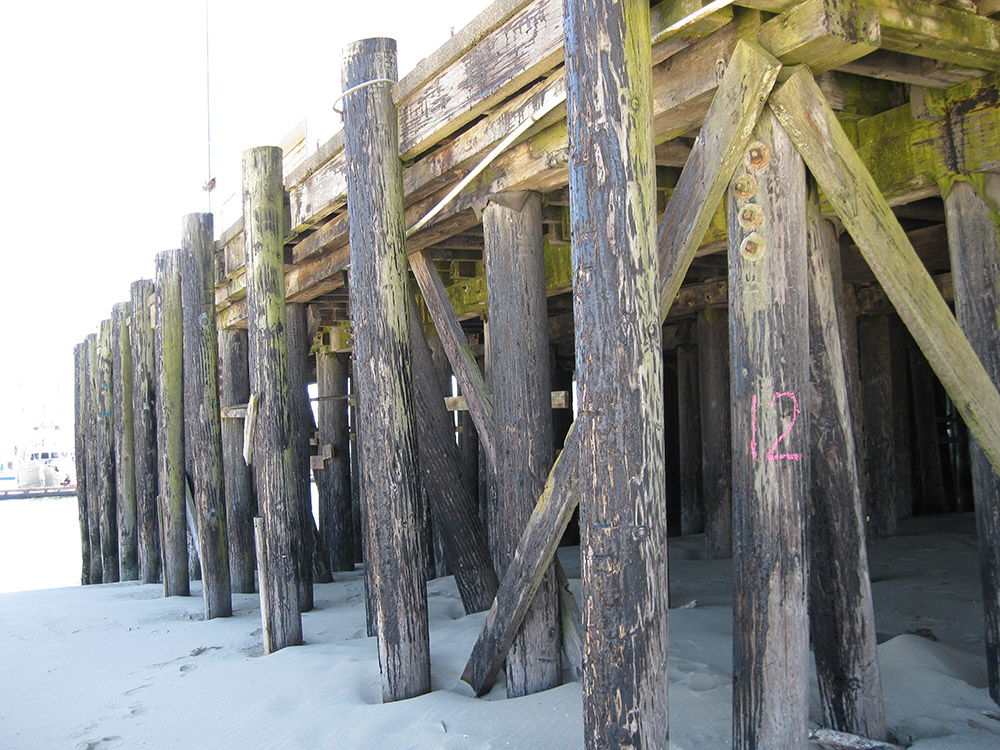“Why are you going to remove those piles? They look perfectly fine!” and “Why can’t those piles be reused somewhere else? It is a waste to cut them up!” If you work around the waterfront and have any experience with timber pile removal, whether for repair or replacement of a structure, you are now nodding your head. You’ve heard these questions many times over the years from the public, clients, and others. And while you might be tempted to come up with a witty response, such as “We’re just trying to do our part to support the forestry industry!” or “Nah, we just don’t like the look of timber anymore, we prefer something more modern,” there really is a much better answer.
What’s the Problem?
Many of the timber pier structures here within the Pacific Northwest as well as along the entire Pacific coast were originally built when timber was the preferred (ie – cheapest and most readily available) material for construction. And at the time, the treatment to prevent those piles from rotting away was creosote. While engineers and divers will attest that creosote has been a very effective preservative treatment, unfortunately, it is damaging to our environment. Over time, the creosote leaches from the timber structures and piles into the water and the soil around the piles, contaminating both. From there, the contaminants affect the tiny microorganisms in the water and can accumulate in the food chain, all the way up to the yummy seafood that is on our plate, and even beyond to those wonderful creatures we love to see out in the water like seals, porpoises, and our favorite – orca whales.
What’s the Solution?
So, how do we prevent contamination from happening or at least limit the potential impact on the environment? By removing the contaminated piles of course! In each project that has creosote piles, the desired end result is to remove those piles so that they can no longer leach chemicals into the water and soil. This is typically done by vibrating and pulling the piles up in the hopes of removing the entire creosote pile (rather than breaking it off). The piles are also carefully handled so they don’t harm the environment in the process of being removed. Marine contractors employ several measures that are required by the US Army Corps of Engineers, Washington Fish and Wildlife, and other permitting agencies. These include installing a floating debris boom and turbidity curtain to contain any creosote splinters or debris as the pile is pulled, keeping spill kits on hand with absorbent material to soak up any petroleum sheen on the surface, transferring the piles directly to an enclosed space so that any creosote on the pile and in the soil attached to the pile is contained, cutting them up into smaller lengths (to ensure they won’t be reinstalled or reused somewhere), and then disposing of them at an appropriate upland facility.
What’s the Replacement?
And finally, to answer the question that some of you are still waiting to find out – what do we actually replace those piles with? In some cases, we use new timber piles, either untreated or with more modern preservatives that do not leach into the environment or have such drastic impacts. But for the majority of projects, those piles are replaced with either steel pipe or concrete piles. Both of these options have significant benefits. They are made of inert materials that will not contaminate the environment and have significantly longer design lives – roughly two times more than the timber piles. And that results in a structure that is better for the end users, owner, public, and environment.
The next time you hear those familiar questions, you now have a few responses to choose from:
- The generic: “It’s better for the environment.”
- The scientific: “It removes contaminants, improves water quality, and prevents them from being reused.”
- Or, the witty response: (previously mentioned or create your own), hopefully followed by one of the above!


